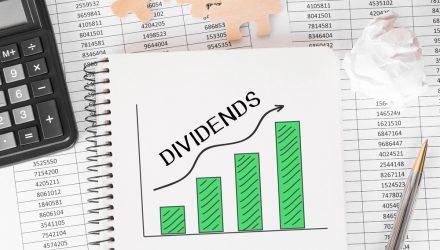The two primary styles of dividend investing are growth and yield. In the latter, investors embrace stocks with what are deemed above-average yields — often from slower-growth sectors, such as utilities and real estate.
The strategy has merit, particularly when interest rates are low. On the other hand, equity yield investing carries some risk because historically, many dividend offenders — cutters or suspenders — hail from the high yield space. Conversely, dividend growth firms don’t often sport jaw-dropping yields.
Rather, their selling point to investors is reduced volatility and steadily rising payouts. It’s a durable style that can account for a significant portion of an investor’s returns when those rising payouts are reinvested over long holding periods. For investors that need more convincing regarding the efficacy of dividend growth, look no further than Warren Buffett and his Berkshire Hathaway (NYSE: BRK.B).
Buffet Highlights Validity of Dividend Growth
In his recent letter to Berkshire investors, Buffett highlighted American Express (NYSE: AXP) and Coca-Cola (NYSE: KO) as two examples of the potency of dividend growth. Buffett’s company finished building what was then a $1.3 billion stake in Coca-Cola in 1994. Back then, Berkshire earned $75 million in dividends from that investment. Today, the payout Berkshire earns from that one stock is north of $700 million.
“American Express is much the same story. Berkshire’s purchases of Amex were essentially completed in 1995 and, coincidentally, also cost $1.3 billion. Annual dividends received from this investment have grown from $41 million to $302 million. Those checks, too, seem highly likely to increase,” wrote Buffett.
But wait — there’s more. A recent article by Fortune’s Lucy Brewster forecast that just five stocks will generate about $6 billion in equity income for Berkshire Hathaway this year. Those are Apple (NASDAQ: AAPL), Bank of America (NYSE: BAC), Chevron (NYSE: CVX), Coca-Cola, and Kraft Heinz (NASDAQ: HNZ). Apple is relatively new to the dividend game, but it has consistently raised its payout. Chevron announced a dividend increase earlier this year.
That quintet doesn’t include other Berkshire holdings with reputations for steady payout growth, such as the aforementioned American Express, Mastercard (NYSE: MA), and Visa (NYSE: V).
Of course, Buffett has the capital to own dozens of stocks in size — a luxury most retail investors don’t possess. However, efficient dividend growth investing is available to a broad swath of a market participants, thanks to products such as the T. Rowe Price Dividend Growth ETF (TDVG). As of April 30, Apple and Visa were among TDVG’s top 10 holdings.
For more news, information, and analysis, visit the Active ETF Channel
The opinions and forecasts expressed herein are solely those of Tom Lydon, and may not actually come to pass. Information on this site should not be used or construed as an offer to sell, a solicitation of an offer to buy, or a recommendation for any product.








